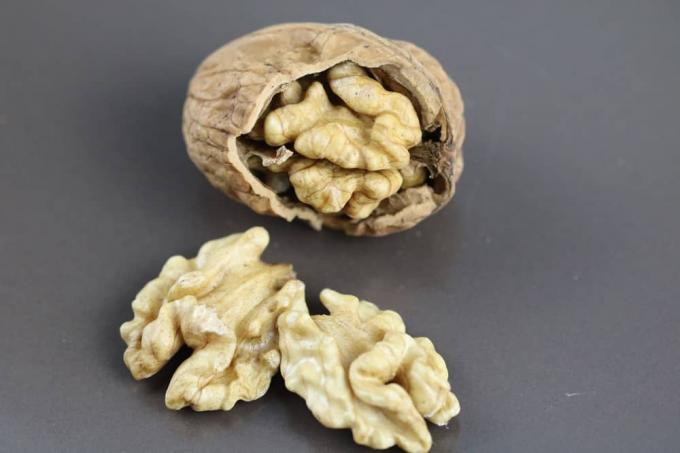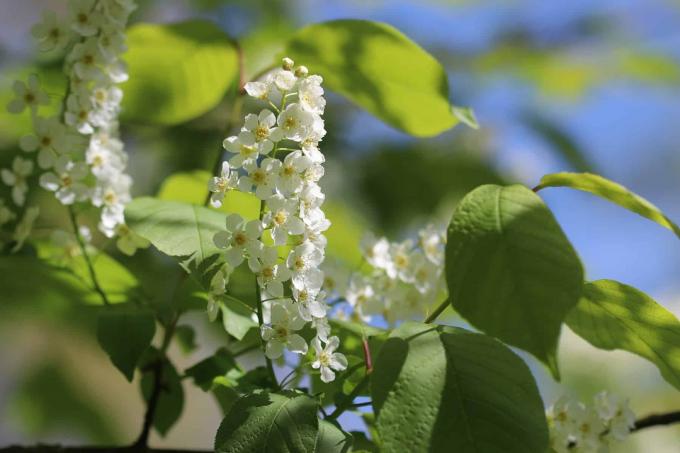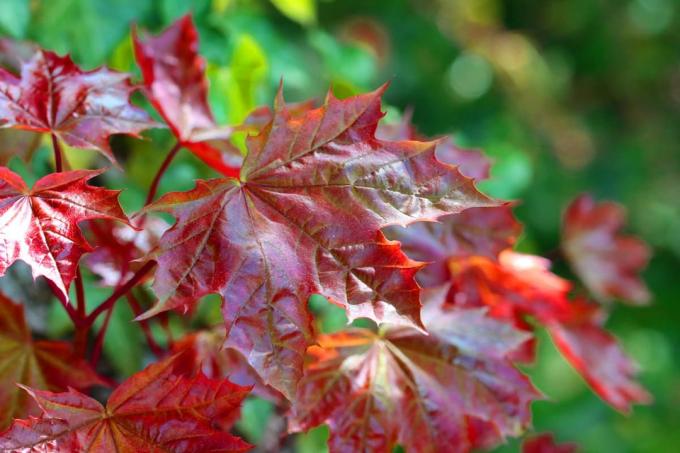

Table of contents
- Age-Related Factors
- site conditions
- trunk circumference
- stock density
The real walnut tree bears the botanical name Juglans regia and can grow to an impressive width and size. Fully grown specimens reach sizes between 15 and 25 meters, so that they clearly stand out in the tree population. If the site conditions are optimal, the trees can even grow a few meters taller. However, the growth of the walnut tree can vary as it depends on many criteria.
Age-Related Factors
Various factors determine how large and fast the walnut tree grows. Certain influences promote or slow down the growth of the tree. This includes above all the age of the walnut. In addition, uneven growth is to be expected in the first years of life, both in height and in width. This circumstance is probably due to the tree's own supply and the still small trunk circumference. Once Juglans regia has developed properly, the tree can take better care of itself and grow more evenly. In this way, the required nutrients can also reach higher altitudes. After the slow start, growth can even increase by a few meters in the years that follow.
- Grows very irregularly in the first 3 years
- Growth is initially around 5-20 cm per year
- After that, the growth increases to 20-45 cm per year
- Half-grown trees have stronger growth
- Height growth is only noticeable from the age of 10. age constant
- Is then between 50-100 cm per year
- Achieved with approx. 80 years its maximum possible height
- Depending on the variety, it can reach a total height of 10-25 m
- In exceptional cases specimens grow 30 m high
- Little growth in height in old age
- Walnut trees can reach an age of up to 160 years
A notice:
As the walnut grows older, neither does the crown grow in width nor does the overall height increase noticeably. In addition, harvest yields decrease significantly.
site conditions
The growth of the walnut tree is heavily dependent on the soil quality and nutrient supply. If these conditions are right, the tree will grow much faster. Especially in the middle phase of life, a nutrient-rich soil greatly favors the development and growth of the walnut. If you buy Juglans regia from a specialist shop, you have to take into account that the young tree will not develop as strongly in the first years of its life. In the case of trees from the trade, the so-called schooling is carried out. As part of this measure, the young specimens are transplanted and the root system is cut back. This is to achieve a compact growth to make it easier to sell. These walnut trees then generally need a few more years until they have settled in and develop an average growth rate.
- Nutrient-rich loam and clay soils are ideal
- Calcareous soil also promotes growth
- Enrich nutrient-poor soils before planting
- In case of weak growth, fertilize additionally
- Cultivation on the spot from the nut is optimal
- Then quickly forms a dense root system
- Avoid changing location so as not to damage roots
Tip:
Depending on the variety, the walnut tree starts between the 4th to 15. Standing year to develop its delicious fruits.
trunk circumference

An important influencing factor for the development of the walnut tree is the trunk circumference. The so-called vascular bundles, which supply the tree with water and important nutrients, run through the bark right down to the last leaf. The more space there is for the vascular bundles in the bark, the better it is supplied. This circumstance affects and favors both growth in height and width. However, the walnut tree cannot grow endlessly and the trunk cannot become thicker and thicker. The reason for this is the gravity on earth, which is why the vascular bundles are no longer fully efficient at some point.
- Large girth encourages growth
- Size increases only from the age of three
- Trunk nourishes tree by capillary effect
- With higher growth, gravity increases
- High gravity affects capillary effect
- As a result, height growth begins to stagnate
stock density
There are other factors in the walnut tree that can have a strong influence on growth. This includes, above all, the plant neighbors and the environment. If Juglans regia is surrounded by other trees, then this is clearly reflected in the increase in height. In addition, a location with optimal conditions can also be a hindrance to the growth of the walnut tree. Pruning can promote growth in many tree species, but the walnut does not belong to this group. In this way, Juglans regia has established itself as an extremely easy-care tree. If pruning measures are carried out, then these do not hinder the development of the walnut. The tree then continues to grow as it did last year.
- In dense stands, walnut pushes upwards into the light
- Attempts to overtake neighboring trees
- Grows much taller in dense stands
- Growth is much faster there in the first few years
- However, this circumstance is only conducive to height growth
- The trunk is neither thicker nor the harvest more productive
- Also, pruning does not encourage growth
- However, requires topiary if tree grows sprawling
 Home editorial office
Home editorial office
Learn more about Baumlexikon

Bird cherry, Prunus padus: caring for, pruning & propagating
The bird cherry is a shrub or tree that is the ideal bee pasture in a natural garden. However, the plant should also be viewed with caution, as it is a poisonous plant for horses. Nevertheless, it is popular in the local colorful hedges.

Red maple: 9 tips for caring for, cutting & overwintering
The red maple is one of the most impressive trees in Germany due to its unusual scarlet leaf colour. Here you can find out how to integrate this impressive plant into your garden and how to keep it healthy and vigorous.

Sycamore tree: Properly care for and cut sycamore trees
The plane tree (Platanus) has a high decorative value. In terms of care, it is mostly undemanding, which is why it is often chosen as a street tree. Nevertheless, there are a few details to be observed when it comes to care, as described in the home garden guide.

Birch locations: 5 important criteria
Birch trees are extremely frugal trees and are particularly eye-catching and decorative thanks to their light-colored bark. When choosing a location, however, a few factors should be considered in order to create optimal conditions for their growth and to protect the environment.

Cutting dwarf pine - instructions for the perfect cut
Dwarf pines can be pruned by thinning out, topiary or limbing. A bonsai design with needle and root pruning is also possible. So that the wood does not look unattractive after the pruning measure, a few rules of technology should be observed.

Is the vinegar tree poisonous? | Who is it dangerous for?
In ornamental gardens, the vinegar tree is an attractive eye-catcher due to its unusual flowers and the appealing autumn color of its feathered leaves. The red, upright fruit cobs (flowers) are responsible for the striking appearance. Despite everything, the vinegar tree is not an unproblematic tree.



